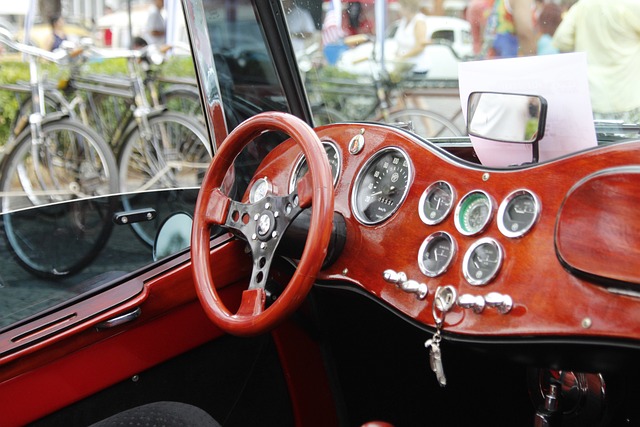Classic car insurance is a specialized type of auto insurance designed specifically for vintage and collector vehicles. Unlike standard auto insurance, it caters to the unique needs of classic car owners by offering tailored coverage, agreed value options, and restrictions that reflect the limited use and special care these vehicles typically receive. If you own a classic car, understanding how this insurance works can help you protect your valuable asset while enjoying peace of mind.
What Qualifies as a Classic Car?
Insurance providers often have specific criteria to determine whether a vehicle qualifies for classic car insurance. While definitions may vary, common requirements include:
- Age of the Vehicle: Most insurers consider cars 20 years or older as classics, though some policies may also cover modern collectibles or antique vehicles over 45 years old.
- Condition: The car should be in good to excellent condition, often restored or well-maintained.
- Limited Use: Classic car insurance typically applies to vehicles not used for daily commuting but rather for special occasions, car shows, or pleasure drives.
- Garage Storage: Many policies require the car to be stored in a secure garage or facility.
How Does Classic Car Insurance Differ from Standard Auto Insurance?
Classic car insurance differs from regular auto insurance in several key ways:
1. Agreed Value Coverage
Unlike standard policies that use the actual cash value (ACV) of a vehicle—which factors in depreciation—classic car insurance offers agreed value coverage. This means:
- You and the insurer agree on the car’s value at the start of the policy.
- In the event of a total loss, you receive the full agreed amount, without depreciation deductions.
Learn more about how agreed value and ACV differ in What Are Common Exclusions in Collision Coverage?.
2. Mileage Limits
Policies often include mileage restrictions, such as 5,000 miles per year, reflecting the car’s limited use. These limits help keep premiums lower while ensuring the car’s preservation.
3. Specialized Repairs
Classic car insurance typically covers the cost of specialized repairs using authentic or original parts, acknowledging the importance of maintaining the car’s historical integrity.
4. Car Shows and Events
Coverage may extend to damages or liabilities incurred while attending car shows, parades, or other collector events.
What Does Classic Car Insurance Cover?
While coverage options vary, most classic car insurance policies include:
- Liability Coverage: Protects against damages or injuries you cause to others.
- Collision Coverage: Pays for repairs to your vehicle after an accident.
- Comprehensive Coverage: Covers non-collision-related damages, such as theft, vandalism, or natural disasters.
- Uninsured/Underinsured Motorist Coverage: Protects against losses caused by drivers without adequate insurance.
Some insurers also offer extras, like roadside assistance or coverage for spare parts.
How Are Premiums Determined?
Premiums for classic car insurance are typically lower than those for standard auto insurance due to the limited use of the vehicle. Factors influencing premiums include:
- Vehicle Value: Higher-valued cars may have higher premiums.
- Storage Conditions: Cars stored in secure garages may qualify for discounts.
- Driver Profile: A clean driving record helps reduce costs.
- Mileage Limits: Lower mileage often translates to lower premiums.
For strategies to manage costs, explore Can You Reduce the Cost of Collision Coverage?.
What Are the Common Exclusions?
Classic car insurance policies often include exclusions such as:
- Daily Commutes: Using the car for everyday driving may void the policy.
- Wear and Tear: Maintenance issues or normal aging are not covered.
- Unsecured Storage: Claims may be denied if the car is not stored in a secure location.
How to Choose the Right Classic Car Insurance Policy
Selecting the best policy for your classic car requires careful consideration of your needs and the policy’s terms. Steps include:
- Assess Your Vehicle’s Value: Get a professional appraisal to determine its worth.
- Compare Insurers: Research companies specializing in classic car insurance.
- Review Coverage Options: Ensure the policy includes agreed value, comprehensive, and liability coverage.
- Understand Restrictions: Be aware of mileage limits and storage requirements.
Why Classic Car Insurance Is Worth It
Owning a classic car is more than just having a vehicle; it’s about preserving a piece of history. Classic car insurance provides tailored protection that standard auto insurance cannot match. With agreed value coverage, specialized repair options, and lower premiums, it ensures your cherished car is safeguarded against the unexpected while maintaining its value and character.
Understanding the nuances of classic car insurance empowers you to protect your investment and enjoy your vehicle with confidence. Whether you’re showcasing your car at events or taking it out for a weekend drive, having the right insurance policy is an essential part of the journey.



